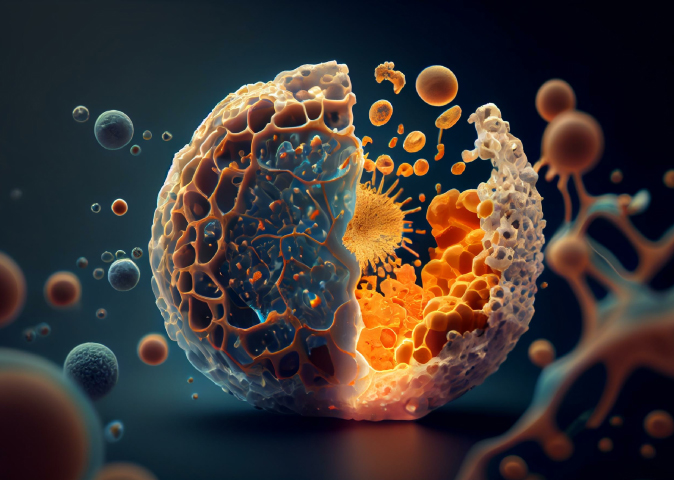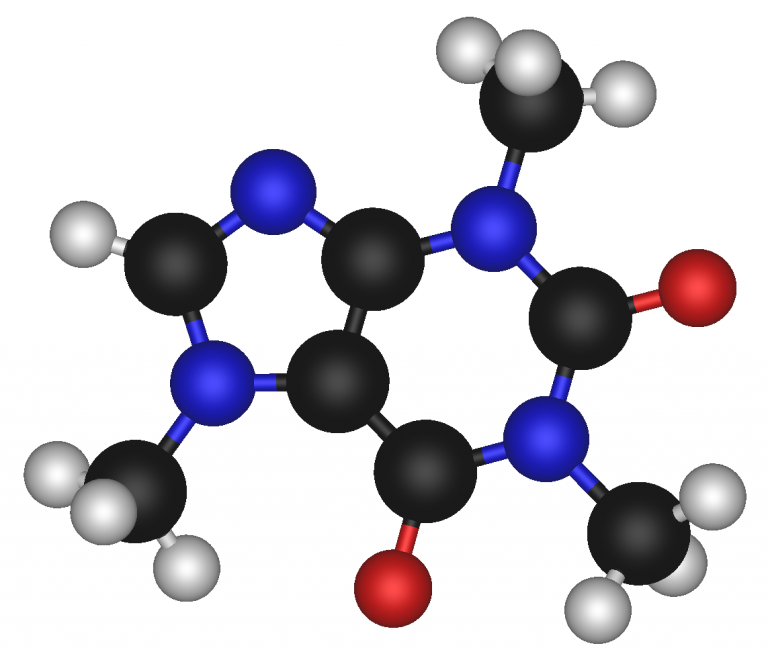Bones are rigid organs that constitute part of the endoskeleton of vertebrates. They support and protect the various organs of the body, produce red and white blood cells and store minerals.
The rigid bone, the flexible cartilage, and the elastic tendon illustrate the remarkable capacity of connective tissue to assume a wide range of physiological states.
The three major cell types found in bone are osteoblasts, osteocytes and osteoclasts.
Osteoblasts
Osteoblasts, or bone forming cells, originate from pluripotent mesenchymal stem cells that can also differentiate into muscle, fat, and blood cells. Mature osteoblasts synthesize and extrude the necessary proteins for bone construction, including type I collagen, osteocalcin, osteonectin and alkaline phosphatase. Osteocalcin is a 6 kDa calcium binding protein, capable of capturing calcium from circulation. Osteonectin is a 32 kDa protein that serves as glue between the collagenous matrix and hydroxyapatite. Alkaline phosphatase is an enzyme that facilitates proper bone mineralization.
Osteocytes
Once entrapped within the mineralized bone, the osteoblast loses its synthetic activity and becomes a resting osteocyte. The metabolic activity of osteocytes helps to maintain the calcified bone as a living tissue.
Osteoclasts
The osteoclast is a giant multinucleated cell derived from fusion of several precursor cells of the monocyte/macrophage lineage. The primary function of osteoclasts is bone resorption, a process that involves both extraction of calcium and destruction of matrix. Normally, bone resorption occurs concomitantly with new bone formation.
The coupling of these processes, known as bone remodeling, enables continuous renewal of bone mass throughout the life of the organism. It also provides bone with the capacity to heal itself from breaks and cracks.
Ossification, or the conversion of tissue to bone, involves destruction and removal of tissue and formation of bone in the space formally occupied by it. It normally occurs in either membranous fibrous tissue or in cartilage, as in the formation of the cranial and long bones, respectively.
Growth factors and cytokines involved in bone biology
It was in 1965 that Urist discovered that acellular, devitalized and demineralized bone matrix (DBM) could induce cartilage and bone formation when implanted under the skin or into the muscle of adult rodents (Urist M.R., Science 150, 893-899 (1965)). Later, the osteoinductivity, or bone inducing activity of DBM was attributed to a proteinacious component that received the name bone morphogenetic protein (BMP) (Urist M.R., et. al., Proc. Natl. Acad. Sci. USA 76, 1828-1832 (1979)). Protein purification followed by amino acid sequencing of several BMP-derived tryptic fragments, led to the cloning and expression of the first group of BMPs (5-7). Today, these proteins constitute a family of more than 30 known members, 15 of which are of mammalian origin. Members of the BMP family are also known by other names such as osteogenin (BMP-3), osteogenic protein-1 or OP-1 (BMP-7), and cartilage-derived morphogenetic protein-1 or CDMP-1 (BMP-14). As implied by their name, BMPs initiate, promote, and regulate bone development, growth, remodeling and repair.
With the exception of BMP-1, which mistakenly was called BMP, but is in fact a type I procollagen C-proteinase, the BMPs belong to the TGF-ß superfamily of structurally related signaling proteins. Members of this superfamily are widely represented throughout the animal kingdom, and have been implicated in a variety of developmental processes.
The potential clinical uses of BMPs in treating bone and cartilage defects have stimulated extensive research. During the past decade, the osteogenic activities of these proteins have been tested in combination with a variety of osteoconductive carriers both in human and animal models. These studies have demonstrated the efficacy of some of these proteins, for example BMP-2 and BMP-7, in bone-repair experiments.
Find yours!
- BMP-2 : a potent osteoinductive cytokine, capable of inducing bone and cartilage formation in association with osteoconductive carriers such as collagen and synthetic hydroxyapatite
- BMP-4 : involved in the development and maintenance of bone and cartilage
- BMP-5 : expressed in the nervous system, lung and liver. It is a known regulator for dendritic growth in sympathetic neurons
- BMP-6: abnormally expressed in breast cancer cell lines; however, its function in promoting breast cancer development is unknown
- BMP-7/OP-1: a potent bone inducing agent, which in the presence of appropriate osteoconductive carrier can be used in the treatment of bone defects.
- BMP-10 : plays a crucial role in the development of the embryonic heart by acting to stimulate and maintain cardiomyocyte proliferation
- BMP-13/CDMP2: expressed in hypertrophic chondrocytes during embryonic development of long bones
- GDF-5 (BMP-14/CDMP1): expressed in long bones during embryonic development and postnatally in articular cartilage
- Myostatin: a TGF-β family member that acts as an inhibitor of skeletal muscle growth
- SPARC/Osteonectin: a TGF-β family member that acts as an inhibitor of skeletal muscle growth
- TGF-beta 2: multifunctional cytokines that regulate cell proliferation, growth, differentiation and motility as well as synthesis and deposition of the extracellular matrix
Any doubts about the best factors for your research?
Finding the tools optimally suited to your needs helps to boost research. Some expert advice in identifying and using the best factors may be welcome!
[contact-form to=’ali.el.baya@tebu-bio.com’ subject=’Cytokines and growth factors…’][contact-field label=’Nom’ type=’name’ required=’1’/][contact-field label=’Email’ type=’email’ required=’1’/][contact-field label=’Commentaire’ type=’textarea’ required=’1’/][/contact-form]



